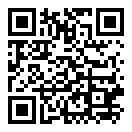Belt Disc Sander
Jump to navigation
Jump to search
| Belt Disc Sander | |
|---|---|
| Information | |
| Owner | Midsouth Makers |
| Tool Category | Tool -> Power Tool |
| Model | 31-460 |
| Serial | R9025 |
| Cost | 0 |
| Status | Available |
| Availability | Anyone may use |
| Labels | |
| Media | |
| QRCode | |
| Questions? Talk to Ben or Dan for help or more information. |
Location
Features
- 3100 rpm disc and 2000 sfpm belt speed
Consumables
The disc size is 6" and the belt is 4" by 36". If you break or burn out a belt/disk please replace it.
Allowable Materials
Wood is recommended. Soft plastics and metals can be used but will cause premature belt wear.
Sanded wood must comply with the following rules:
- No moldy or wet wood
- No treated/painted/finished wood
- All nails and staples removed
Personal Protective Equipment
- Wear Safety Goggles
- Use Hearing Protection
- Roll long sleeves above the elbow
- Tie back long hair
- Do not wear loose clothing, gloves, neckties or jewelry
- For dusty operations, wear a dust mask
Safe Operation
- Always sand against a sanding table – no ‘free hand’ sanding in mid-air on the main belt surface
- Always sand pieces significantly larger than the gap between the sanding table and the belt or disc
- Only apply enough pressure to allow the sandpaper to remove material; do not force material into the sander
- Move objects continuously back and forth across the sanding belt or disc to prevent burnout
- Only sand on the left side of the disc; never cross over the center of the disc
- Adjust the table angle by loosening thumb knobs or Allen wrench screws and then moving the tables; make sure to re-tighten and secure the tables before sanding begins
Prior to each use
Hook a vacuum to dust port if sanding a substantial amount. It will make cleanup easier.
After each use
- Brush off any sawdust/leftover materials
- Sweep surrounding area
- Return sander back to its location


